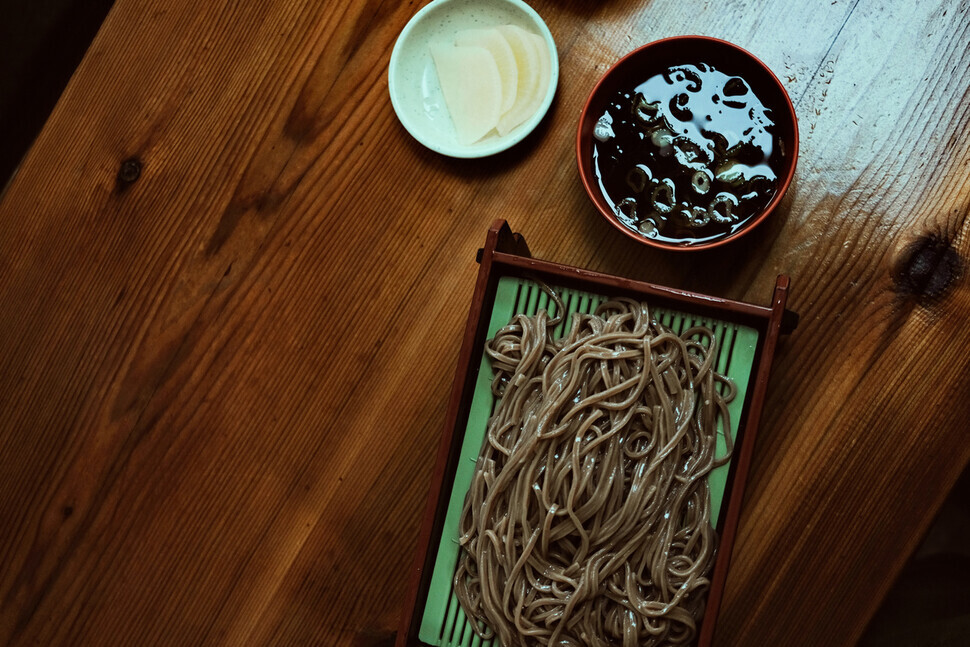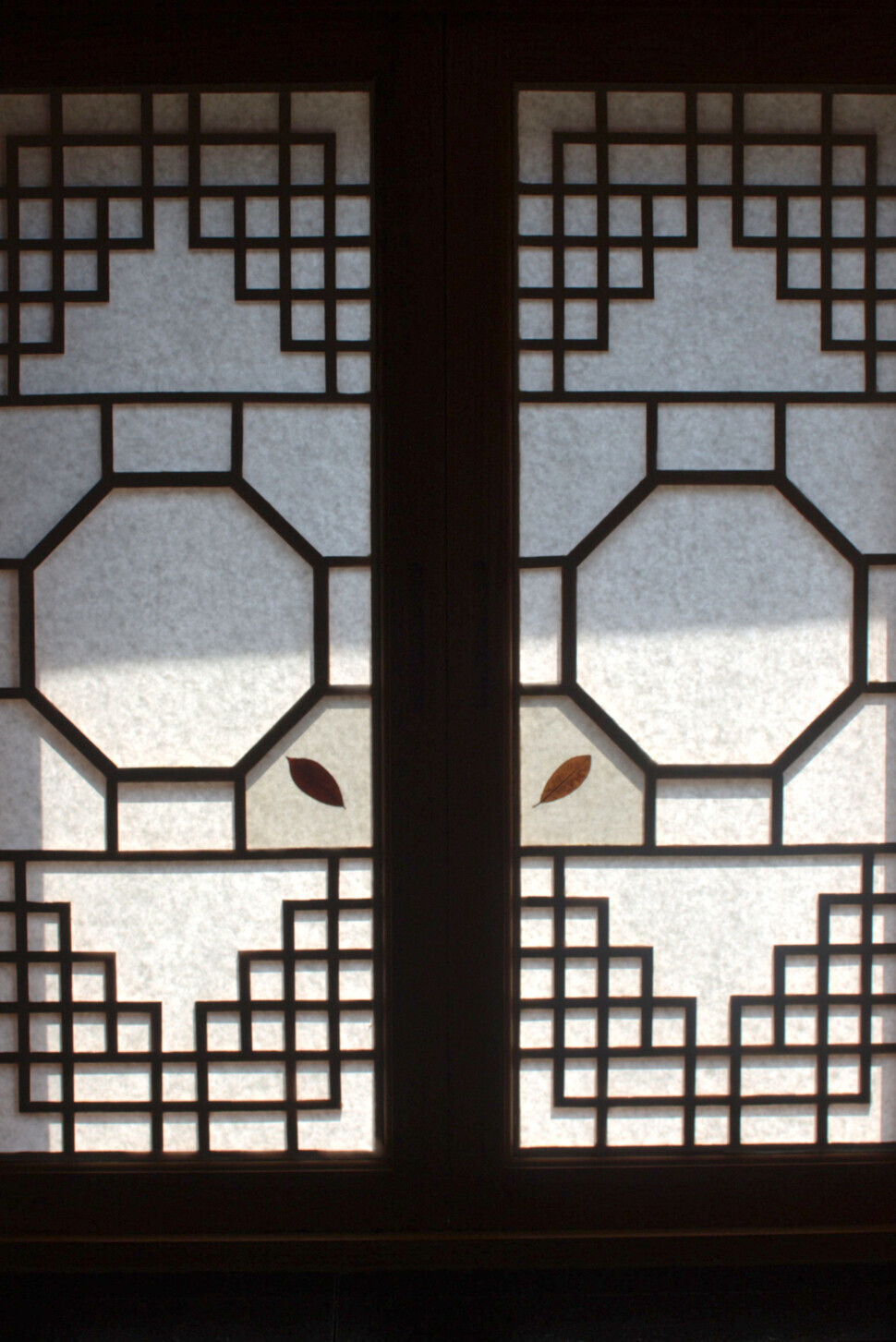hankyoreh
Links to other country sites 다른 나라 사이트 링크
[Korea travels] Meandering through Busan’s original retro downtown

Following the sound of cicadas, I climbed up the seemingly unending flight of stairs. When I reached the top of the stairs, I was met with a locked white door. Meanwhile, a dog next door yipped and yipped at my arrival. I rang the doorbell and waited. Finally, the white door opened.
When the door opened, I found myself staring up to dozens more flights of stairs. As I trudged up the stairs, I looked back and saw the view of Busan’s old downtown.
A thin, strict-looking man came out of a guard office and nodded at me.
Thusly I arrived at the Busan Meteorological Observatory, a historical site for Korean meteorology.

The Busan Meteorological Observatory is a hidden historical meteorological relic in Korea. In fact, Busan was the first place in Korea to have a modern meteorological observatory.
In 1884, simple meteorological observations began being taken. By 1934, a government office dedicated to conducting observation was built in the Daecheong neighborhood of Busan. After liberation from colonization, the building became known as the Busan Observation Station for the Central Meteorological Office (present-day Korea Meteorological Administration, KMA).

Until relocating in 2002, the building was home to the Busan Regional Office of Meteorology.
In recognition of its historic significance, the Busan Meteorological Observatory was recognized as a “Centennial Observing Station” by the World Meteorological Organization in 2017. It is one of only 6 observatories in the whole of Asia that have been in operation for 100 years or more.
But it doesn't matter if you go up these stairs without knowing all this background information. The building itself is beautiful and the view is stunning.
It’s what some would call a “retro”-style building, which young people seem to go wild for nowadays. For those who like modern architecture or to experience the historical traces of early modern cities, they won’t tire of simply meandering around the Jung District of Busan all day.
For example, just a five-minute walk from the Busan Meteorological Observatory is a house built in 1958 which still stands in its original form. The house, built by Dongbang Yuryang Chairman Shin Deok-gyun, had been used as a residence since the Japanese colonial era, but took on a new life as the Busan Jung-gu Cultural Center in 2021. The details of the house built in 1958 are still there.
Even more than the buildings, the composition of the neighborhood’s back streets itself is a remnant of history.

The Busan Meteorological Observatory and the Busan Jung-gu Cultural Center are located in the vicinity of the Bokbyeong and Yongdu mountains, the site of Choryang Waegwan, where trade between Joseon and Japan took place before the Japanese colonial period, starting from the 17th century. Although Choryang Waegwan closed its doors in 1876, the infrastructure from this time period, such as the roads and the port, became the basis for Busan’s original city center, according to the Choryang Waegwan guide map.
The alleyways of that era formed Busan’s original city center, which exudes an atmosphere unique to the area to this day. The name “Mount Bokbyeong” originated from the fact that Joseon soldiers lay in ambush on the mountain in order to watch over the goings-on at Choryang Waegwan.
Long ago, this location was central Busan itself. Like that of Seoul, Busan’s city hall was located near the main train station. Shipping companies had settled down near Busan City Hall and the Port of Busan. Even the Busan MBC building and the court were nearby, so this neighborhood was truly Busan’s city center, as its name indicates.
Kang Myeong-jin, the second-generation owner of Jungang Buckwheat Noodles, a noodle restaurant that’s been operating in this area since 1956, recalled, “The alleyways were always jam-packed with passers-by when I looked down from the fourth floor.” When big administrative facilities like Busan City Hall, the court, and the Busan MBC building as well as companies left the Jung District, fewer and fewer people visited the neighborhood.
Now, it would be awkward to call this area Busan’s city center, even though some industries like shipping and finance call it home. Because the number of Japanese tourists visiting dwindled due to COVID-19, there were a lot of empty offices to be seen in the area.

Perhaps because of the above, the neighborhood of Jungang in 2022 still looks a lot like the old days. Old office buildings, old hotels where businessmen used to stay, and the restaurants those people used to visit are still being run as they were during those times. The Commodore Hotel, which opened in 1979 and was the best hotel in 1980s Busan, still looks like the cult favorite it was back in the day. Australian architect George Frew transplanted details from traditional hanoks to a Western-style hotel building, and even now, the hotel looks unusual the first time you see it.
However you may judge Korean aesthetics as interpreted by a Westerner at the time, it’s certain that the exterior and interior details of the building have been rendered with perfect craftsmanship. For example, each hotel room is equipped with a lamp with a unique design, a leaf pressed into each window made with handcrafted hanji paper. These details indicate a high level of interior design rarely practiced today. If you search the internet, you’ll see some Westerners losing their minds about the odd details of this building. Jang Jun-oh, the sales team lead for the Commodore, commented, “We’ve remodeled the building a lot according to customer demand, but 100 out of the 310 guest rooms still retain their old look.”
People’s stubbornness remains where time has passed. Cho Jae-bung, the owner of the Baekgoodang bakery, which opened its doors in 1959, still wakes up at 2:30 in the morning and clocks in at 4 am. He hasn’t opened a branch of the restaurant because he wants to keep the taste consistent.
Jungang Buckwheat Noodles likewise never opened new branches, instead focusing on maintaining the consistency of their flavor. Jungang Buckwheat Noodles hasn’t even been featured on television since opening, because “being on TV would inconvenience the regulars.” The noodle restaurant’s owner also goes to work early in the morning. Perhaps thanks to the diligence with which the owners work, Baekgoodang sells out of its signature bread by 11 am, and people wait in long lines in front of Jungang Buckwheat Noodles well after lunchtime on weekends.
“Jung District and Nampo neighborhood would be ‘Level 3’ Busan itinerary,” said a customer sitting at the next table at a bar I wanted to feature in this essay but ultimately didn’t, where I grabbed a drink on my own instead. “People traveling to Busan for the first time go to Haeundae. They go to Gwangalli if they go further, and then to Busan’s original city center in the Nampo neighborhood of Jung District if they’re looking for more fun.”
The owner’s insistence was what made me decide against introducing the bar. Although he didn’t know I was a reporter, he told me that the bar being mentioned briefly somewhere brought so many more customers that the regulars felt uncomfortable. I couldn’t insist on featuring the bar in my article after hearing that. Full of LPs, the small bar looked relaxed and peaceful in itself. People who stake their stubbornness and beliefs in a store of their own, who were definitely in Seoul at some point but have disappeared now to goodness knows where, seemed to still exist in Busan’s original city center.

Nothing about a city is eternal. Someday, the neighborhood of Jungang will change as well.
Busan’s original city center seemed bustling with anticipation about the development of a northern port and World Expo 2030, which Busan hopes to host. Commodore Hotel will continue to be remodeled, and placards about redevelopment can now be seen in the Yeongju neighborhood, which is another area with a long history nearby.
So, if you want to feel what a big city of old felt like, why not visit Busan’s original city center this summer? Both young people searching for that “retro” feel and older people who want to reminisce on that old city atmosphere would enjoy the location. The look of the old city and the stubbornness of people of that era still live and breathe in the area.
Baekgoodang owner Cho said, “We are still here, so why not come see for yourself even if it’s a hassle?” When I heard that, I thought, “That’s it. That’s the perfect end for my essay.”
Photos and essay by Park Chan-yong, columnist
Please direct questions or comments to [english@hani.co.kr]

Editorial・opinion
![[Editorial] Penalties for airing allegations against Korea’s first lady endanger free press [Editorial] Penalties for airing allegations against Korea’s first lady endanger free press](https://flexible.img.hani.co.kr/flexible/normal/500/300/imgdb/original/2024/0502/1817146398095106.jpg) [Editorial] Penalties for airing allegations against Korea’s first lady endanger free press
[Editorial] Penalties for airing allegations against Korea’s first lady endanger free press![[Editorial] Yoon must halt procurement of SM-3 interceptor missiles [Editorial] Yoon must halt procurement of SM-3 interceptor missiles](https://flexible.img.hani.co.kr/flexible/normal/500/300/imgdb/child/2024/0501/17145495551605_1717145495195344.jpg) [Editorial] Yoon must halt procurement of SM-3 interceptor missiles
[Editorial] Yoon must halt procurement of SM-3 interceptor missiles- [Guest essay] Maybe Korea’s rapid population decline is an opportunity, not a crisis
- [Column] Can Yoon steer diplomacy with Russia, China back on track?
- [Column] Season 2 of special prosecutor probe may be coming to Korea soon
- [Column] Park Geun-hye déjà vu in Yoon Suk-yeol
- [Editorial] New weight of N. Korea’s nuclear threats makes dialogue all the more urgent
- [Guest essay] The real reason Korea’s new right wants to dub Rhee a founding father
- [Column] ‘Choson’: Is it time we start referring to N. Korea in its own terms?
- [Editorial] Japan’s rewriting of history with Korea has gone too far
Most viewed articles
- 160% of young Koreans see no need to have kids after marriage
- 2Presidential office warns of veto in response to opposition passing special counsel probe act
- 3Anti-immigration candidate marauds across Korea with squad detaining foreigners
- 4[Editorial] Penalties for airing allegations against Korea’s first lady endanger free press
- 5Hybe-Ador dispute shines light on pervasive issues behind K-pop’s tidy facade
- 6Months and months of overdue wages are pushing migrant workers in Korea into debt
- 7S. Korea “monitoring developments” after report of secret Chinese police station in Seoul
- 8[Column] Unsettling moves by the UN Command lay way for Korean involvement in Taiwan
- 9Japan says it’s not pressuring Naver to sell Line, but Korean insiders say otherwise
- 10Alleged drug use by Korean A-listers rocks nation – but not for the first time